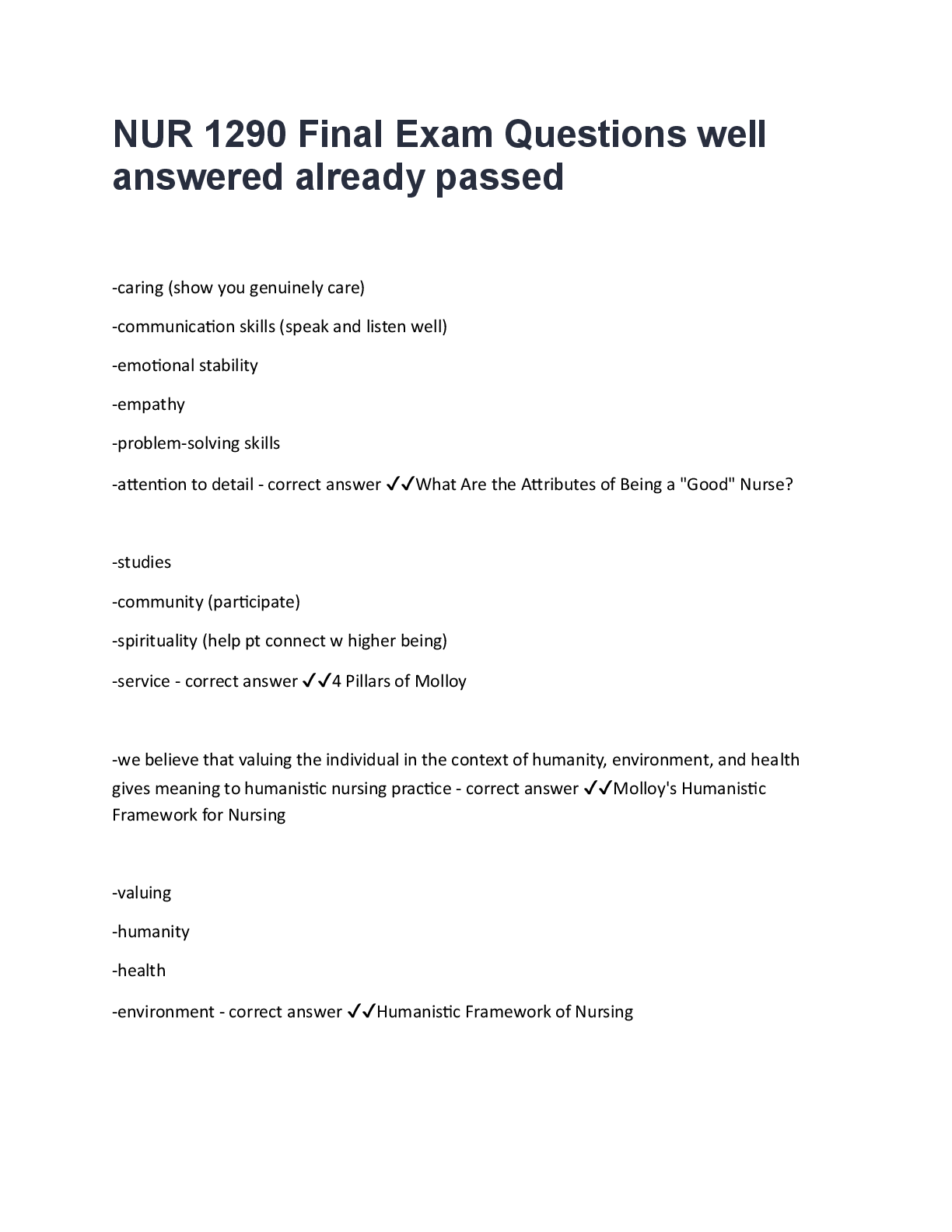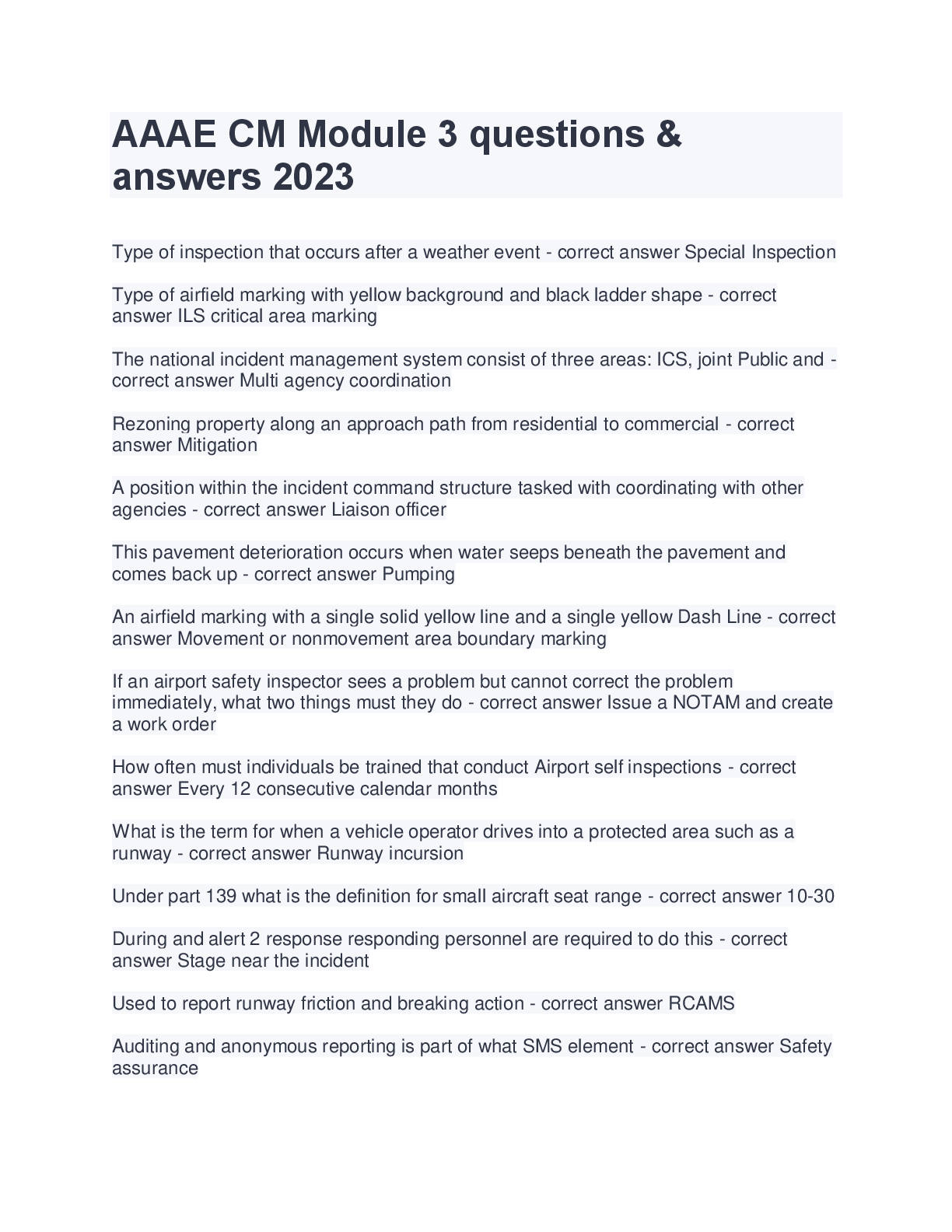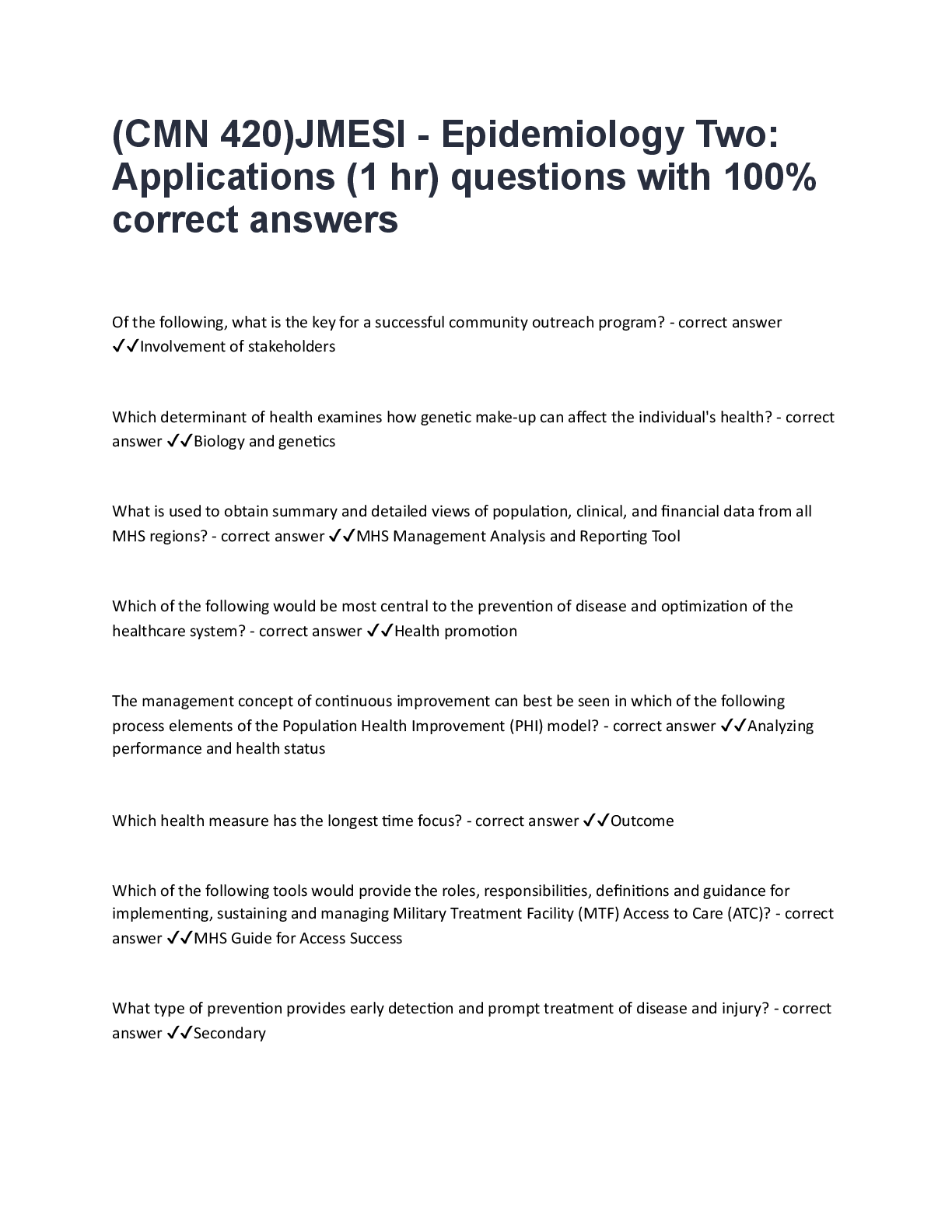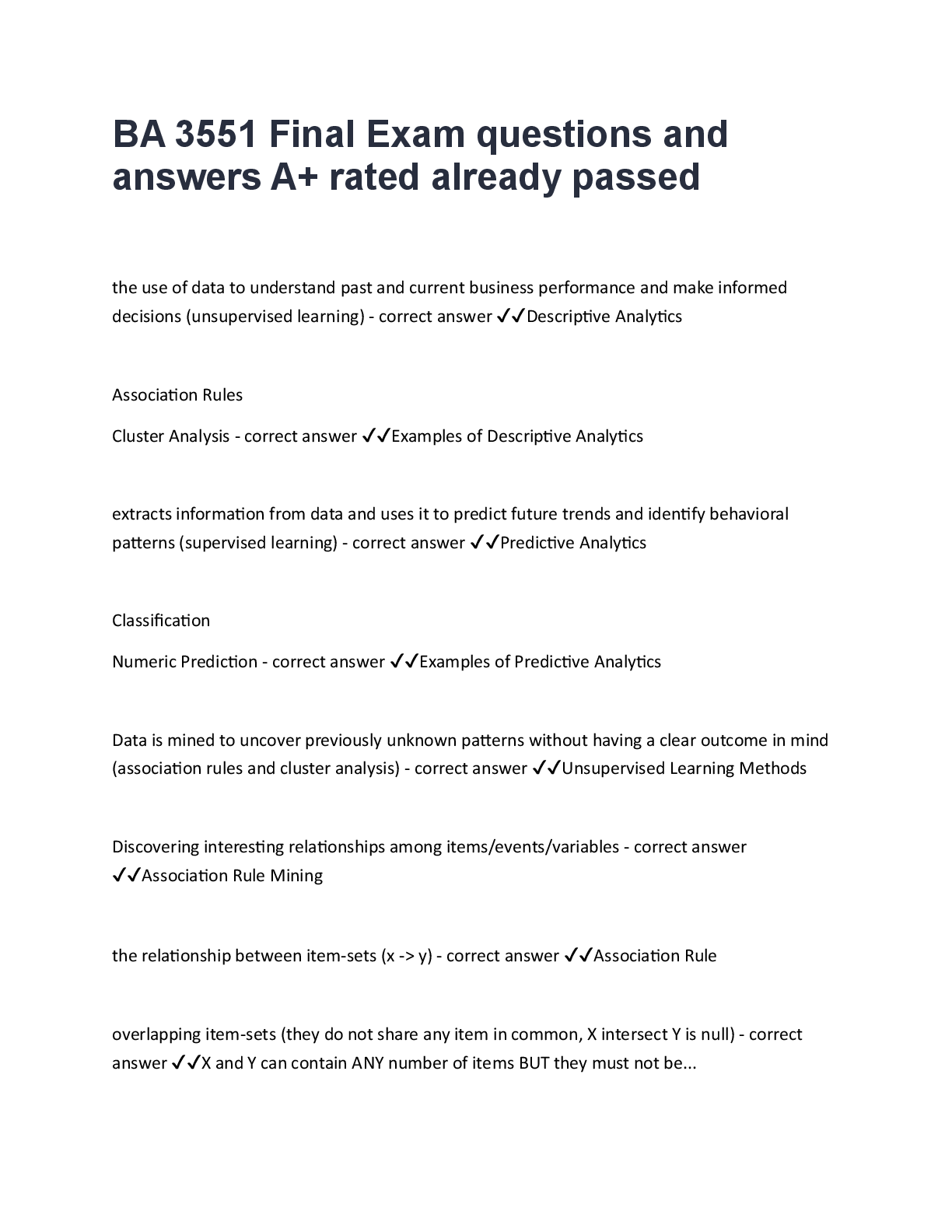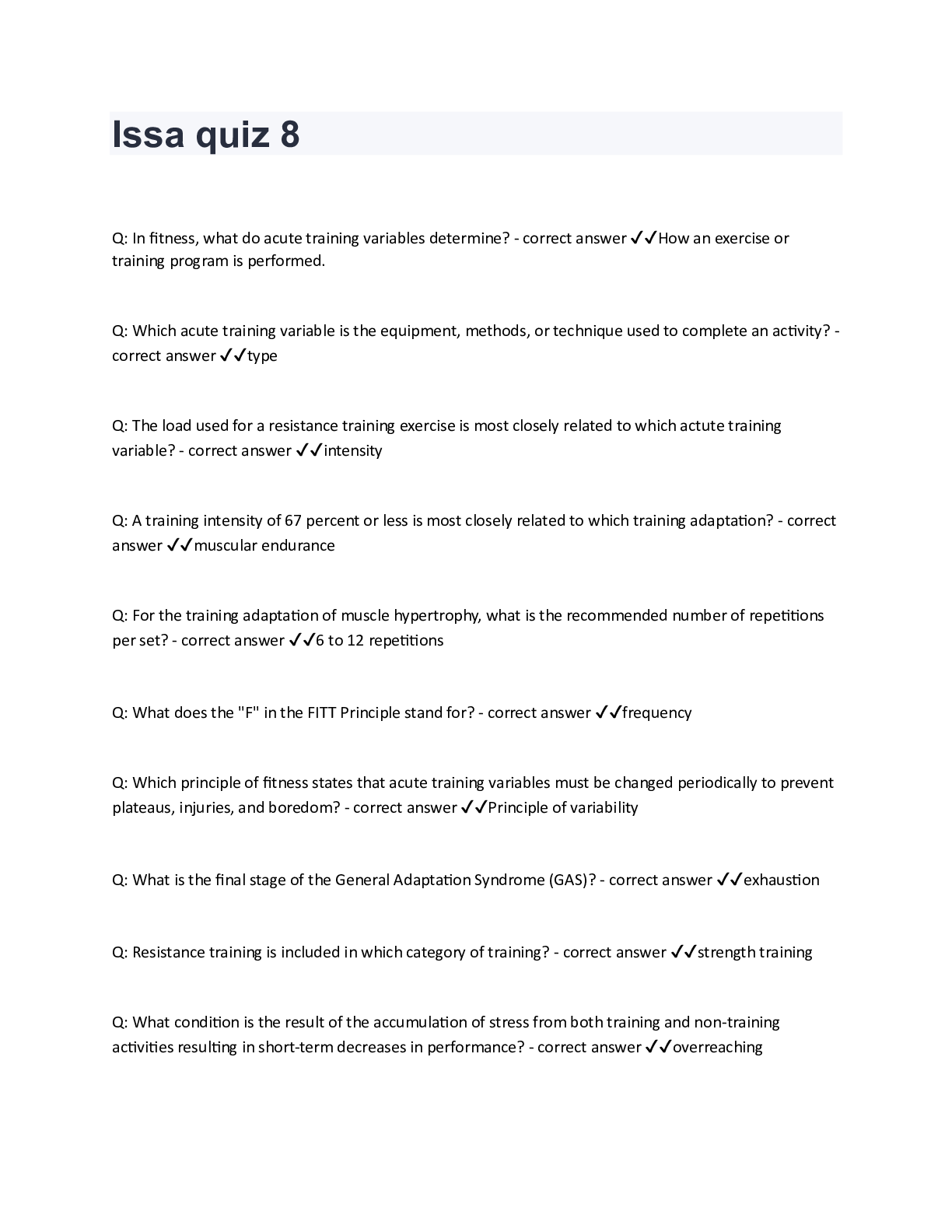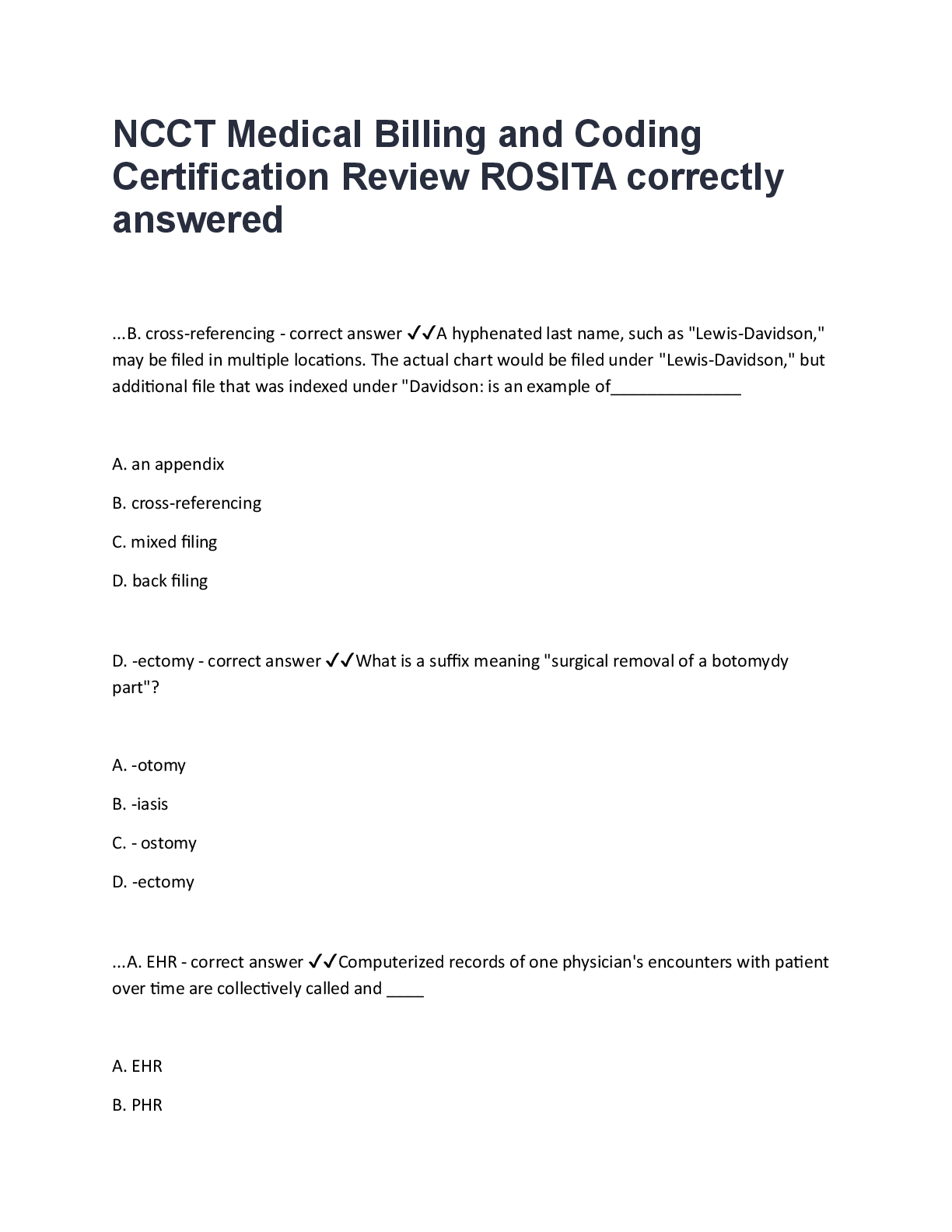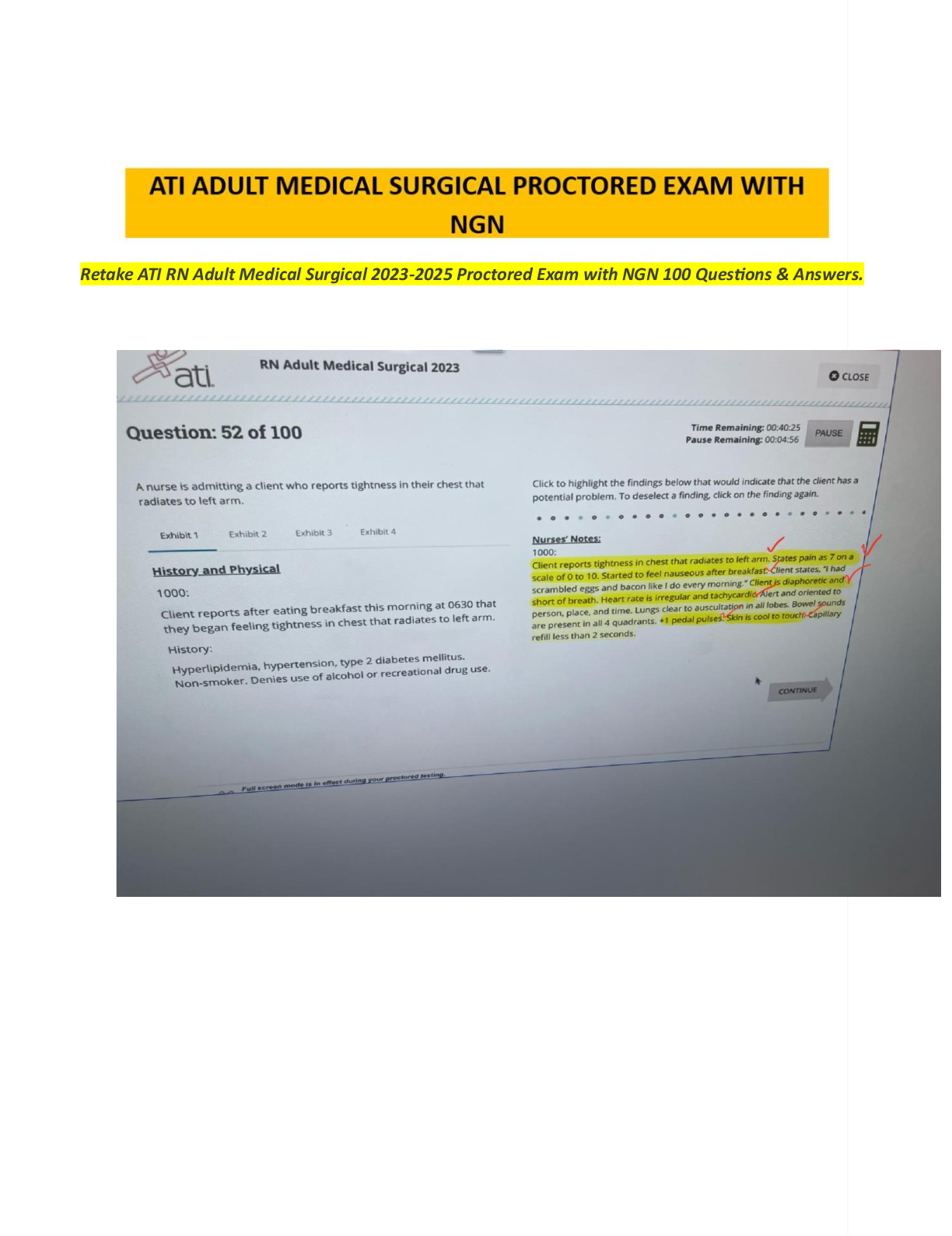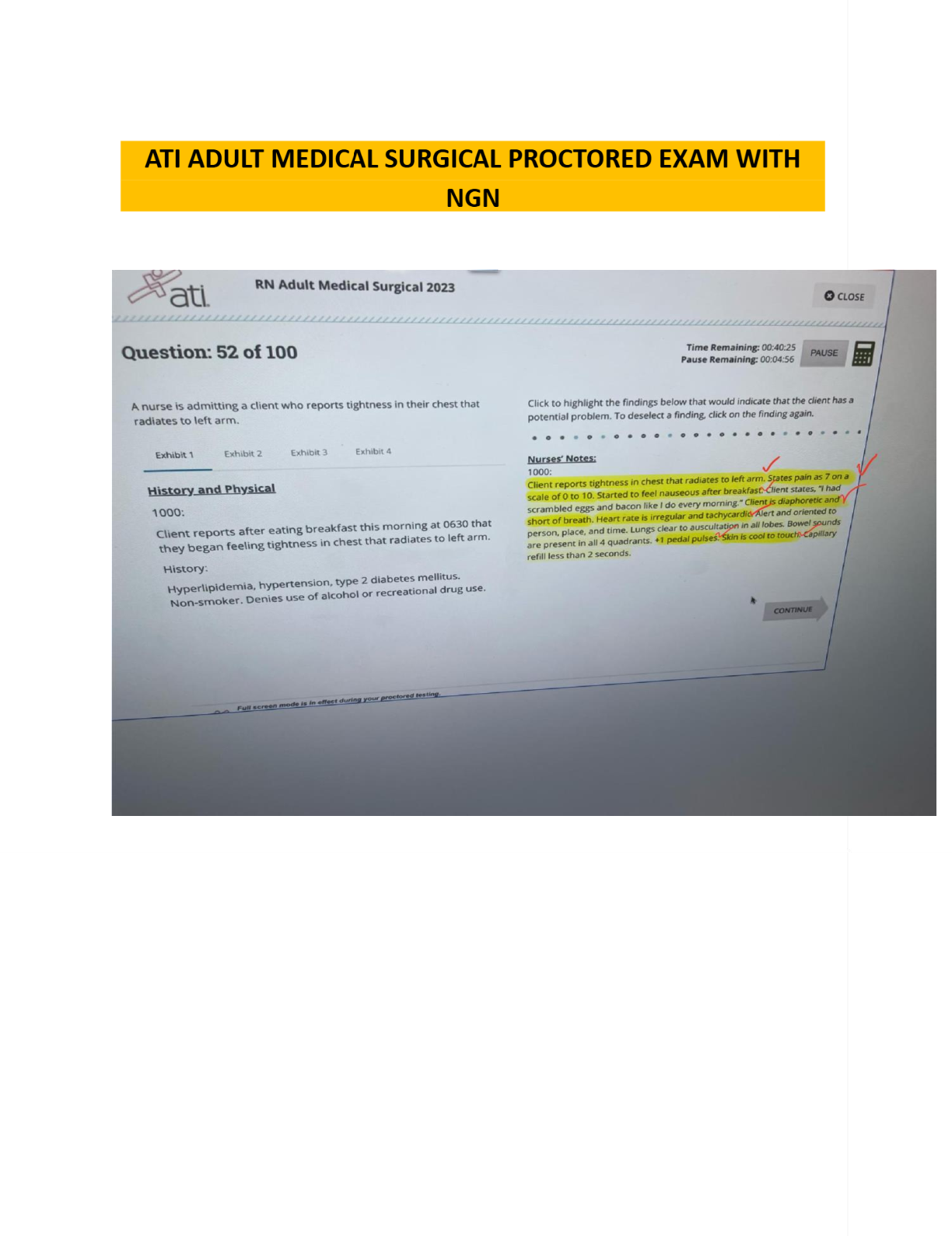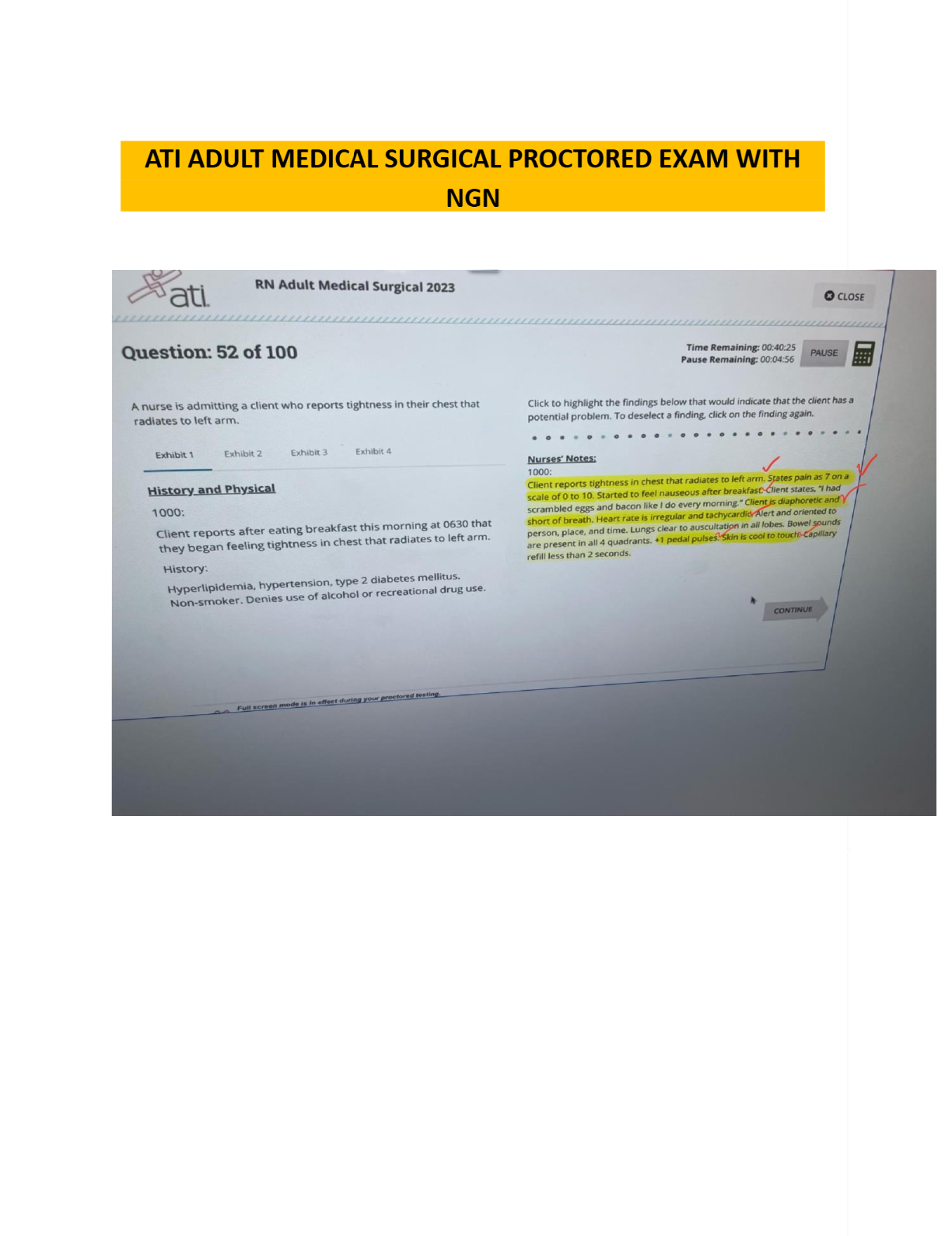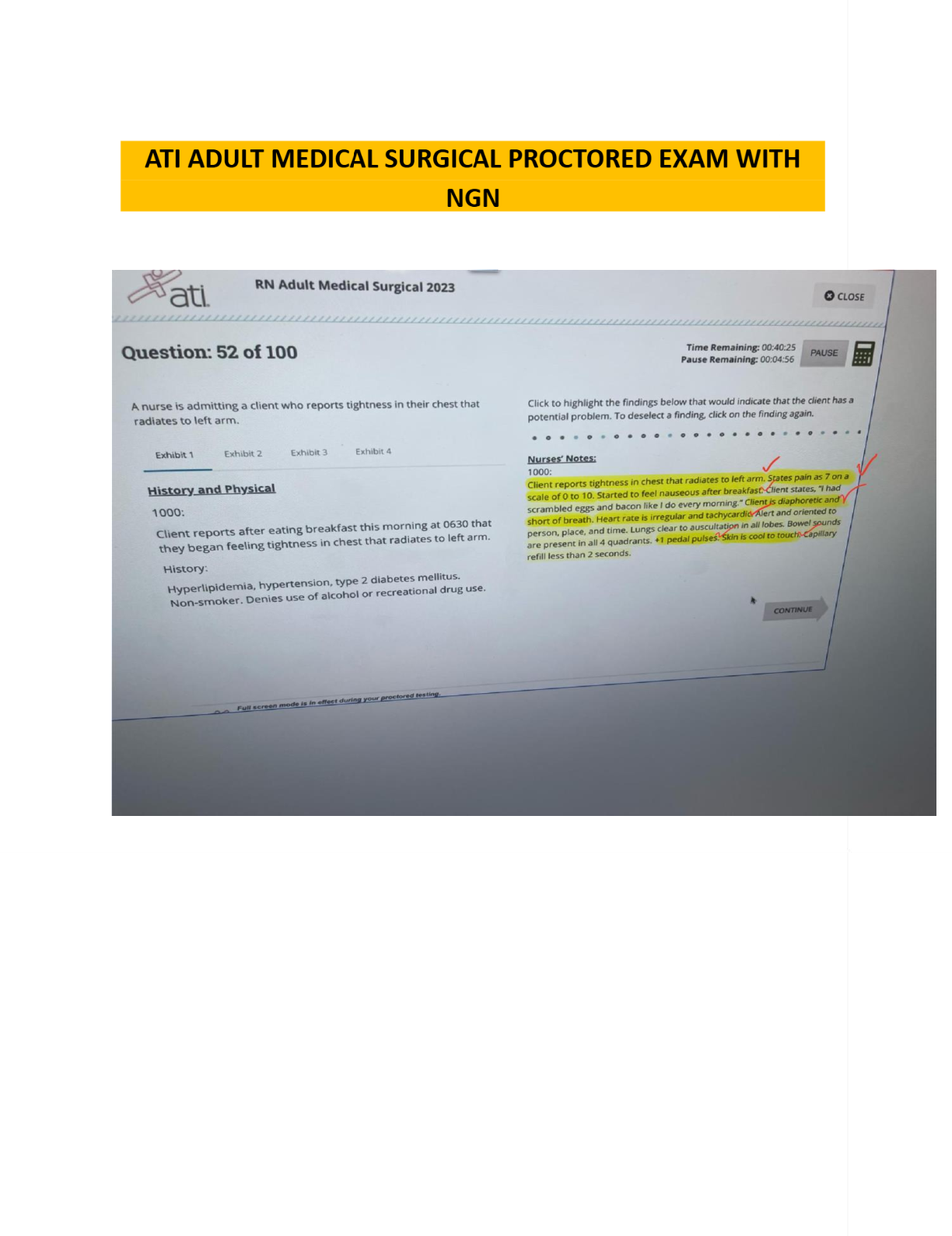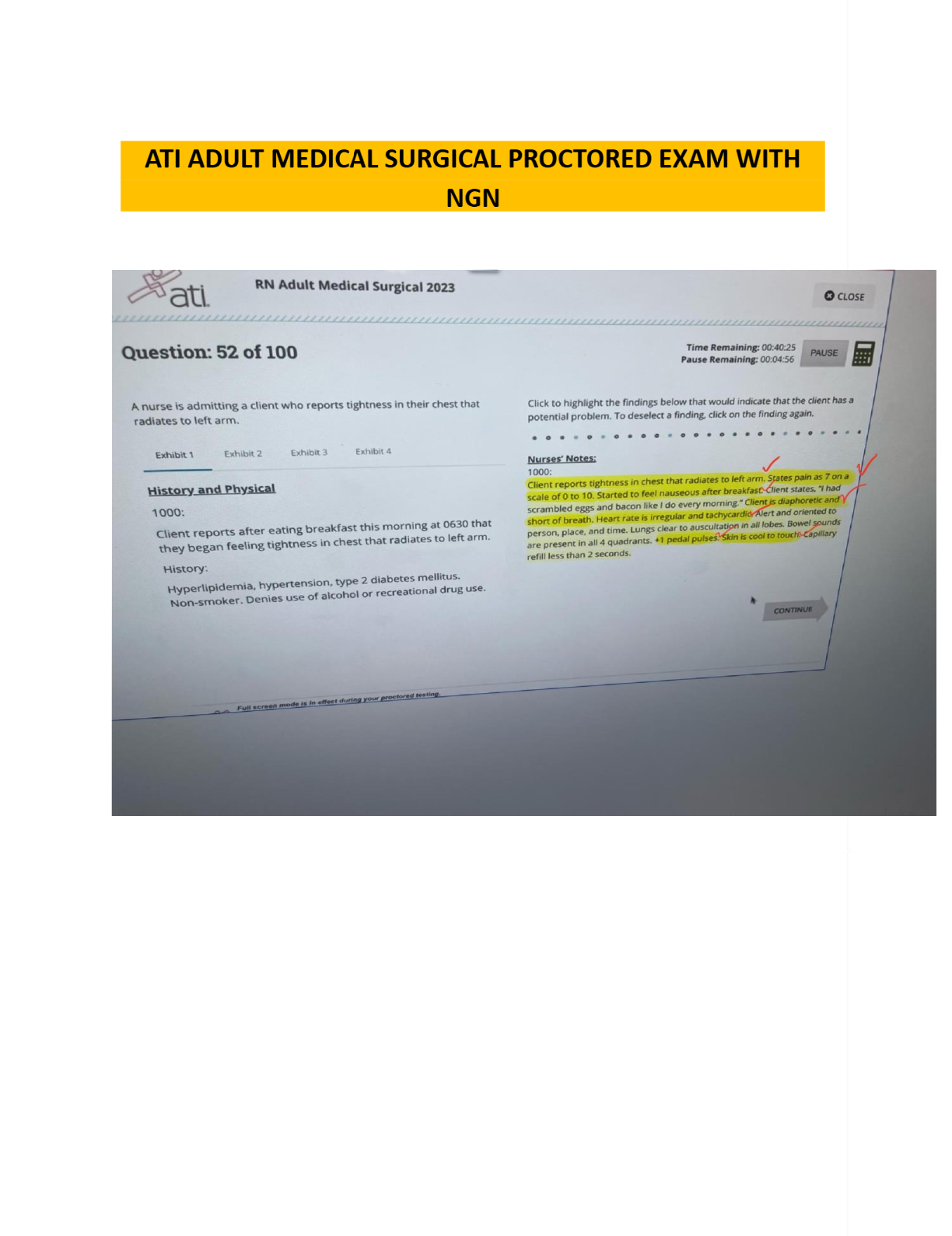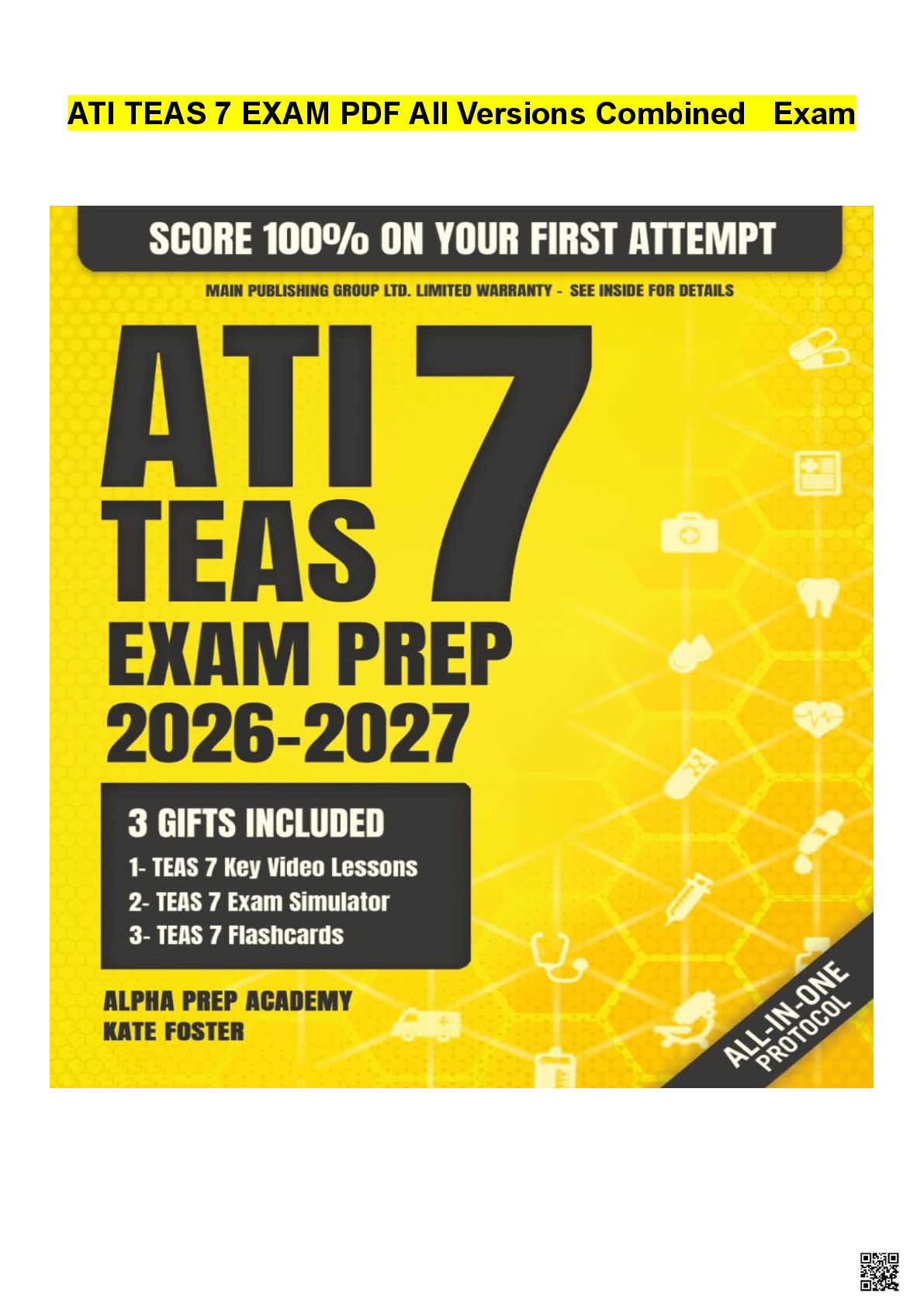Business Management > EXAM > ACCT 2101 EXAM 1 STUDY GUIDE CHAPTER 1-3 QUESTIONS AND ANSWERS (All)
ACCT 2101 EXAM 1 STUDY GUIDE CHAPTER 1-3 QUESTIONS AND ANSWERS
Document Content and Description Below
Chapter 1 1.The liability created by a business when it purchases coffee beans and coffee cups on credit from suppliers is termed a(n) a. account payable. b. account receivable. c. revenue. d. e ... xpense. 2.The right to receive money in the future is called a(n) a. account payable. b. account receivable. c. liability. d. revenue. 3.Which of the following is not a principal type of business activity? a. Operating b. Investing c. Financing d. Delivering 4.Borrowing money is an example of a(n) a. delivering activity. b. financing activity. c. investing activity. d. operating activity. 5.Which activities involve acquiring the resources to run the business? a. Delivering b. Financing c. Investing d. Operating 6.Which activities involve putting the resources of the business into action to generate a profit? a. Delivering b. Financing c. Investing d. Operating 7.When expenses exceed revenues, which of the following is true? a. a net loss results b. a net income results c. assets equal liabilities d. assets are increased 8.The retained earnings statement shows all of the following except: a. The amounts of changes in retained earnings during the period. b. The causes of changes in retained earnings during the period. c. The time period following the one shown for the income statement. d. Beginning retained earnings on the first line of the statement. ACCT 2101 EXAM 1 STUDY GUIDE CHAPTER 1-3 9.Jackson Company recorded the following cash transactions for the year: Paid $135,000 for salaries. Paid $60,000 to purchase office equipment. Paid $15,000 for utilities. Paid $6,000 in dividends. Collected $225,000 from customers. What was Jackson’s net cash provided by operating activities? a. $75,000 (225000-135000-15000) b. $15,000 c. $90,000 d. $69,000 10.Which of the following financial statements is divided into major categories of operating, investing, and financing activities? a. The income statement. b. The balance sheet. c. The retained earnings statement. d. The statement of cash flows. 11.Ending retained earnings for a period is equal to: a. Beginning retained earnings + Net income + Dividends b. Beginning retained earnings – Net income – Dividends c. Beginning retained earnings + Net income – Dividends d. Beginning retained earnings – Net income + Dividends 12.Dividends paid a. increase assets. b. increase expenses. c. decrease revenues. d. decrease retained earnings. 13.To show how successfully your business performed during a period of time, you would report its revenues and expense in the a. balance sheet. b. income statement. c. statement of cash flows. d. retained earnings statement. 14.Net income results when a. Assets > Liabilities. b. Revenues = Expenses. c. Revenues > Expenses. d. Revenues < Expenses. 15.If the retained earnings account increases from the beginning of the year to the end of the year, then a. net income is less than dividends. b. a net loss is less than dividends. c. additional investments are less than net losses. d. net income is greater than dividends. 16.Henson Company began the year with retained earnings of $350,000. During the year, the company recorded revenues of $500,000, expenses of $380,000, and paid dividends of $40,000. What was Henson’s retained earnings at the end of the year? a. $510,000 b. $430,000 (350000+500000-380000-40000) c. $810,000 d. $470,000 17.Finney Company began the year by issuing $20,000 of common stock for cash. The company recorded revenues of $185,000, expenses of $160,000, and paid dividends of $10,000. What was Finney’s net income for the year? a. $15,000 b. $35,000 c. $25,000 (185000-160000) d. $45,000 18.Gilkey Corporation began the year with retained earnings of $155,000. During the year, the company issued $210,000 of common stock, recorded expenses of $600,000, and paid dividends of $40,000. If Gilkey’s ending retained earnings was $165,000, what was the company’s revenue for the year? a. $610,000 b. $650,000 (155000+X-600000-40000=165000, X=650000) c. $820,000 d. $860,000 19.The accounting equation may be expressed as: a. Assets = Stockholders’ Equity – Liabilities. b. Assets = Liabilities + Stockholders’ Equity. c. Assets + Liabilities = Stockholders’ Equity. d. Assets + Stockholders’ Equity = Liabilities. 20.If total liabilities decreased by $45,000 and stockholders’ equity increased by $15,000 during a period of time, then total assets must change by what amount and direction during that same period? a. $60,000 increase b. $30,000 decrease (45000-15000) c. $30,000 increase d. $45,000 decrease 21.The primary purpose of the statement of cash flows is to report a. a company's investing transactions. b. a company's financing transactions. c. information about cash receipts and cash payments of a company. d. the net increase or decrease in cash. 22.Elston Company compiled the following financial information as of December 31, 2012: Revenues $420,000 Common stock 90,000 Equipment 120,000 Expenses 375,000 Cash 105,000 Dividends 30,000 Supplies 15,000 Accounts payable 60,000 Accounts receivable 45,000 Retained earnings, 1/1/12 225,000 Elston’s assets on December 31, 2012 are: a. $705,000 b. $510,000 c. $240,000 d. $285,000 (120000+105000+15000+45000) 23.Benedict Company compiled the following financial information as of December 31, 2012: Revenues $280,000 Common stock 60,000 Equipment 80,000 Expenses 250,000 Cash 70,000 Dividends 20,000 Supplies 10,000 Accounts payable 40,000 Accounts receivable 30,000 Retained earnings, 1/1/12 150,000 Benedict’s stockholders’ equity on December 31, 2012 is: a. $210,000 b. $220,000 (150000+280000-250000-20000+60000) c. $160,000 d. $240,000 24.Marvin Services Corporation had the following accounts and balances: Accounts payable $12,000 Equipment $14,000 Accounts receivable 2,000 Land 14,000 Buildings ? Unearned service revenue 4,000 Cash 6,000 Total stockholders' equity ? If the balance of the Buildings account was $28,000 and $2,000 of Accounts Payable were paid in cash, what would be the balance of the total stockholders' equity? a. $54,000 b. $48,000 (A=2+28+4+14+14=62000; L=10+4=14000; SE=62000-14000=48000) c. $68,000 d. $52,000 25.Marvin Services Corporation had the following accounts and balances: Accounts payable $12,000 Equipment $14,000 Accounts receivable 2,000 Land 14,000 Buildings ? Unearned service revenue 4,000 Cash 6,000 Total stockholders' equity ? If the balance of the Buildings account was $34,000, what would be the total of liabilities and stockholders' equity? a. $68,000 b. $70,000 (A=2+34+6+14+14=70000; L=12+4=16000; SE=70-16=54000; 16+54=70) c. $54,000 d. $50,000 26.The management discussion and analysis (MD&A) section of the annual report covers all of the following aspects except: a. The ability of the company to pay near-term obligations. b. The certification criteria of the company's auditors. c. The company's ability to fund operations and expansion. d. The results of the company operations. 27.An annual report includes all of the following except a. management discussion and analysis section. b. notes to the financial statements. c. an auditor’s report. d. salary information for all the executives. 28.Which of the following clarifies information presented in the financial statements, as well as expanding upon it where additional detail is needed? a. Auditor’s report b. Management discussion and analysis section c. Notes to the financial statements d. President’s state of the company report Chapter 2 1.The concept that a business has a reasonable expectation of remaining in business for the foreseeable future is called the a. economic entity assumption. b. monetary unit assumption. c. periodicity assumption. d. going concern assumption. 2.The agency of the United States Government that oversees the U.S. financial markets is the a. Internal Revenue Service b. Security Exchange Commission c. Financial Accounting Standards Board. d. International Auditing Standards Committee. 3.What organization issues U.S. accounting standards? a. Security Exchange Commission. b. International Accounting Standards Committee. c. International Auditing Standards Committee. d. Financial Accounting Standards Board. 4.Which of the following organizations issues accounting standards for countries outside the United States? a. SEC b. GAAP c. IASB d. FASB 5.Generally accepted accounting principles a. are accounting rules formulated by the Internal Revenue Service. b. are sound in theory but rarely used in real life. c. are accounting rules that are recognized as a general guide for financial reporting. d. have eliminated all errors in accounting. [Show More]
Last updated: 3 years ago
Preview 1 out of 13 pages
 (1).png)
Buy this document to get the full access instantly
Instant Download Access after purchase
Buy NowInstant download
We Accept:

Reviews( 0 )
$15.00
Can't find what you want? Try our AI powered Search
Document information
Connected school, study & course
About the document
Uploaded On
Nov 10, 2022
Number of pages
13
Written in
All
Additional information
This document has been written for:
Uploaded
Nov 10, 2022
Downloads
0
Views
166

